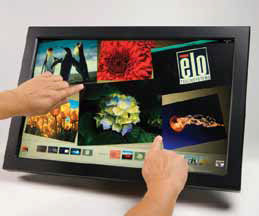Best Practices for Securing & Optimizing Cloud-Based Digital Signage

There are several ways to address best practices for managing and optimizing cloud-based digital signage. We should first clarify the definition of how to describe cloud computing. In general terms, cloud computing is the ability of any number of computers connected through a real-time communications network. Since this talk is around digital signage, your main consideration should be transport methodology. This method should not be a centralized solution, rather a more distributed computing solution that allows for the cloud to “go-away” and still have the digital signs operating until the players can reconnect to the cloud.
You have to ask yourself several questions about the project first:
• How big is your installation, physically and geographically? Can all this be done in-house or will it be farmed out to third party vendors for installation and support processing. What type of data connectivity is required, simple dial-up to DSL to LTE (cell) to high-speed WAN type connections or combinations?
• How much security is required to protect the network? Can a private network or cloud be provided and will it be available in all areas? A private cloud will give you better security feeling, and can be a major undertaking with significant levels of resources to build, create and maintain it. This model almost defeats the purpose of going “cloud”, but provides a higher level of security since no one can access it. A publicly shared network or cloud typically has a much easier method of installation and can be accessed by anyone with Internet access. Also considered less secure, some form of encryption will be required. Creating a VPN tunnel is pretty common. The problem with cloud-based is the security, and most people don’t seem to understand the vulnerability (let’s thank Apple for this). It is only a matter of time before someone hacks a major site and pulls out critical and personal information. Look at the frustration Adobe is going through right now with password and account loss.

In concept, live, in-your-face data is great. As many of us know, it isn’t always the case. • Remote site control requirements? There are a wide variety of systems and methods to control remote sites. Do you need complete remote control and interaction for daily changes or are you able to push data at a schedule time and through a slower network connection? This can be from the hosting site, remote computer and/or any other attachment point.
• What is the amount of information needed to send the digital signs? These tie back to the bandwidth and controlling issues. Pushing data and content to the sites is rather straightforward these days. What is a little more sensitive are the unique sites with user input and data collection requirements. i.e. interactive kiosk with data sent back to the host through the cloud. Is it real time, do you have to respond to an inquiry immediately or can it be delayed? In concept, live, in-your-face data is great. As many of us know, it isn’t always the case.
• Remote site support and hardware requirements, this is simple yet hard. Many media players have the power and not the size. Don’t under estimate the CPU and video horsepower it takes to play videos and move all those graphics around the screen. You also want to make sure that the player will continue to operate even if connection is lost. This should be some form of safe self-looping messaging until the data lines can be restores and ideal unbeknownst to the user. The system should be robust enough to provide notification if the data has been static for an extended period of time or if a hardware error has or will be occurring. This should be tied into the software application that allows for remote viewing, control, on the fly and scheduled updates.
A daily selection of features, industry news, and analysis for tech managers. Sign up below.

The world seems to be caught up in the current technology craze of cloud computing. Being just a bit older-school and doing this for many years; this is similar to going to centralized processing on a hosted main-frame. As any technology considerations, there are pros and cons. If you maintain everything, you have control of everything. By cloud-basing yourself a lot of headache of hardware is gone, a lot of network redundancy is handled and you can shrink and grow the systems fairly easily. Basically, if a node goes down the system does not. This allows for a more resilient and manageable system. You also have access anywhere in the world as long as you can get internet access.
After touching on some of the above points, the items you really need to be focused on are:
• Providers for the cloud, hosted site, end-user site including installation and maintenance
• Software, software & software, the easiest and best fitting model for your application
• Content through distribution, make sure your design allows for clean distribution through the cloud
So get out there a spread the message. Until next time, see you in the clouds.
Technology manager Ralph Schorbach coordinates and operates all computer technology systems, telecom, badge center, and AV systems for Fairplex, Sheraton Fairplex Hotel and the NEW Conference Center, including all hardware and software systems implementation, maintenance, and upgrades. Schorbach serves on the 2014 Digital Signage Expo Advisory Board and will be at Digital Signage Expo 2014 at the Sands Expo & Convention Center in Las Vegas, which will take place February 12-13, 2014. For more information and registration for DSE, visit www.dse2014.com
